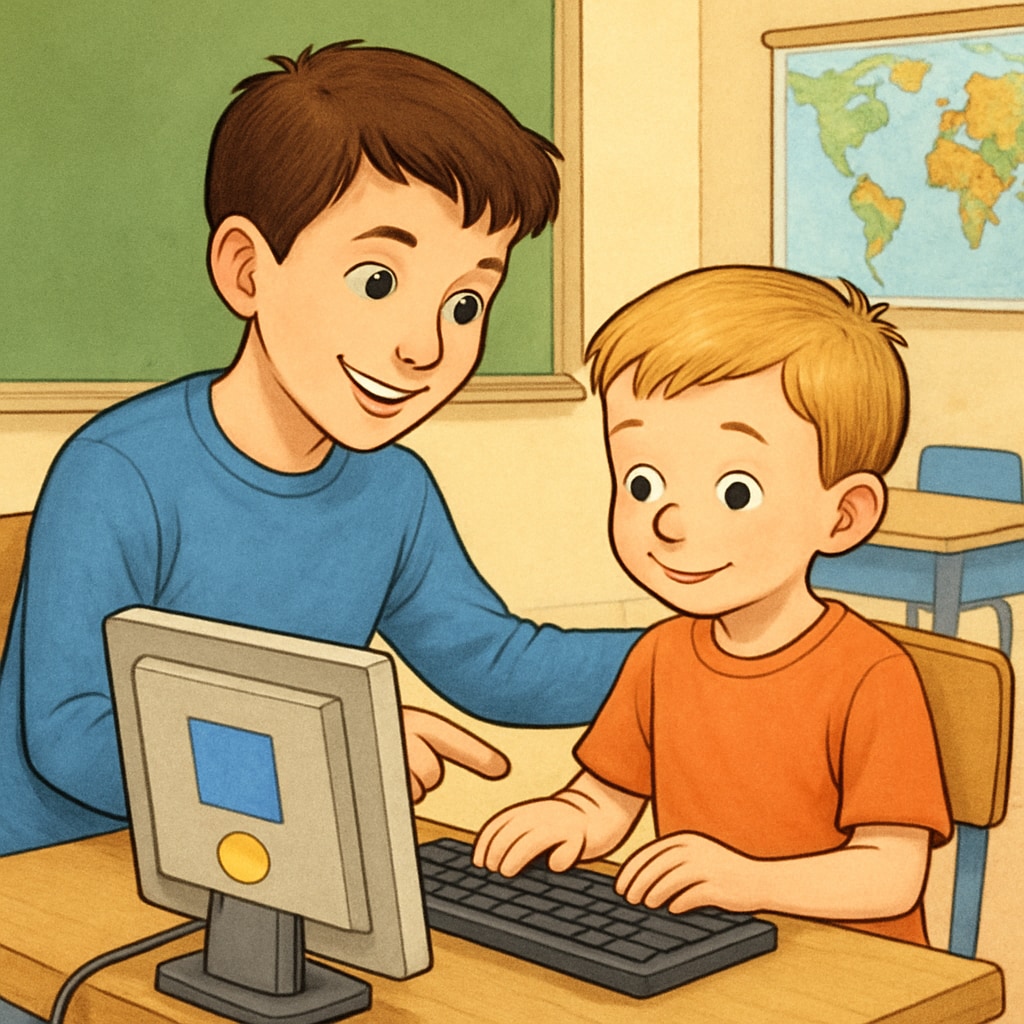Cross-age learning offers a unique opportunity to bring together students of different grade levels for mutual benefit. Kindergarten and fourth-grade partnership programs, for instance, are excellent examples of how “kindergarten partnership programs, cross-age collaboration, and computer-based activities” can create an enriching educational experience for both age groups. By pairing younger children with older peers, educators can foster emotional growth, social skills, and academic engagement. In this article, we explore eight creative activity ideas, with a special emphasis on structured computer activities.
The Educational Value of Cross-Age Collaboration
Partnership programs between kindergarteners and fourth graders bridge the gap between early learners and more experienced students. These initiatives are not just about teamwork; they encourage empathy, leadership, and problem-solving skills. For younger students, having a “big buddy” to guide them can make learning less intimidating. Meanwhile, older students gain a sense of responsibility and the chance to refine their own understanding of concepts by teaching others.
Research supports the value of cross-age programs. According to studies, older students who mentor younger peers often show improved self-esteem and greater academic motivation. Younger students, in turn, benefit from more personalized attention and an engaging learning environment. This symbiosis makes such programs a win-win for all participants.

Eight Exciting Activities for Kindergarten and Fourth-Grade Partnerships
To make the most of these partnerships, planned and structured activities are essential. Here are eight innovative ideas:
- Reading Buddies: Older students can read stories to kindergarteners, helping them develop early literacy skills while improving their own fluency.
- Art Projects: Collaborative art sessions encourage creativity. Fourth graders can assist with cutting, gluing, or brainstorming ideas.
- Garden Projects: Planting flowers or vegetables together teaches patience and teamwork while connecting children to nature.
- STEM Challenges: Simple engineering tasks, like building a tower from blocks, let both age groups work on problem-solving.
- Math Games: Board games or card games that involve counting or basic arithmetic can make math fun for kindergarteners.
- Drama and Role Play: Acting out stories or creating short skits develops confidence and collaboration.
- Computer Activities: Using child-friendly software, fourth graders can guide kindergartners through basic computer tasks.
- Story Creation: Together, students can create and illustrate their own storybooks, blending creativity with literacy.
Focusing on Structured Computer Activities
Among these activities, computer-based tasks deserve special attention. Technology is an integral part of modern education, and introducing it early promotes digital literacy. However, structured guidance is crucial, particularly for young learners. Fourth graders can act as mentors, teaching kindergarteners basic skills such as using a mouse, typing letters, or navigating educational games.
Here are three tips for implementing effective computer activities:
- Choose Age-Appropriate Software: Select programs that are visually engaging and easy for kindergarteners to use, such as drawing tools or phonics games.
- Set Clear Goals: Define what each session aims to achieve, whether it’s learning to click on icons or completing an interactive story.
- Monitor Progress: Educators should periodically check in to ensure the activities are both educational and enjoyable for both age groups.

Creating a Successful Cross-Age Program
For a partnership program to succeed, preparation is key. Here are some best practices for educators:
- Match Students Thoughtfully: Pair students based on compatibility, such as similar interests or complementary personalities.
- Provide Training: Fourth graders should receive a brief orientation on how to support younger students effectively.
- Offer Consistent Scheduling: Regular sessions help students build rapport and maintain continuity in their learning.
- Include Reflection: At the end of each session, allow students to share what they learned or enjoyed the most.
By following these guidelines, educators can create a nurturing environment where both age groups thrive.
Conclusion: The Power of Partnership
“Kindergarten partnership programs, cross-age collaboration, and computer-based activities” showcase the transformative potential of learning together. These initiatives not only enhance academic skills but also build lifelong habits of empathy, cooperation, and leadership. Whether through a structured computer activity or a shared art project, the bonds formed in these programs leave a lasting impact on both younger and older students.
Educators who embrace cross-age partnerships will find them to be an invaluable tool in creating a collaborative and inclusive classroom environment. Start small, plan thoughtfully, and watch the magic unfold!
Readability guidance: This article uses short paragraphs, structured lists, and frequent transitions to ensure clarity. Passive voice and long sentences are minimized to improve readability.


